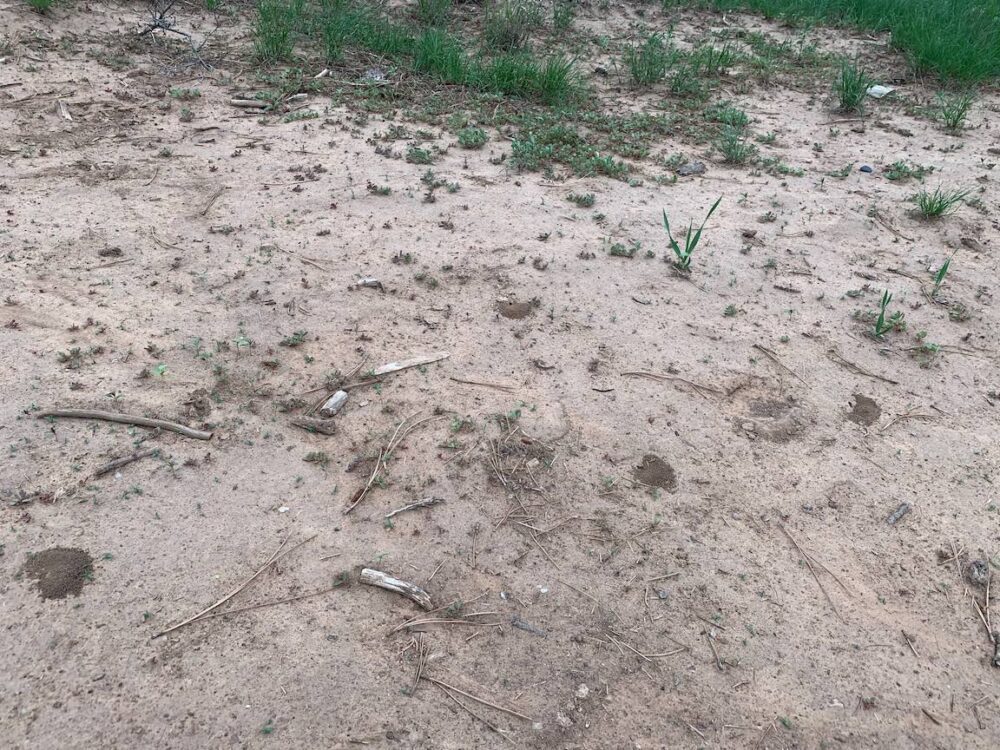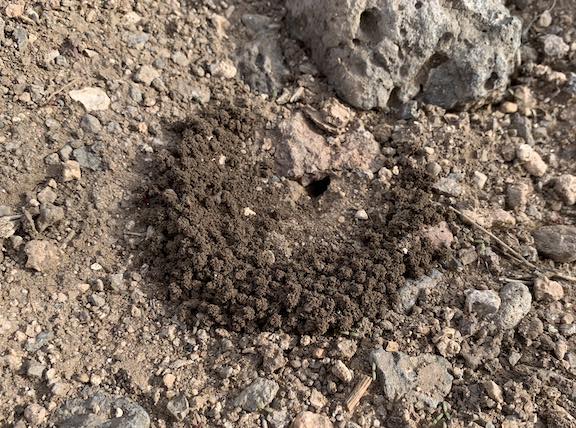By Jennifer Macke
Ants are incredibly efficient diggers. In two previous blog posts, I explored how to identify queen ants and gave some tips for observing ants in the wild. As soon as a new queen ant loses her wings, she starts to dig. This year I attempted to observe ants digging during this critical first day of their life as a queen. This initial digging is the first step in a queen ant’s establishment of a new colony.
Founding chambers
The first hole built by a new queen ant is called a founding chamber. After the queen digs her founding chamber, she will close the hole and stay underground until her first workers are hatched. The founding chamber is just large enough for the queen to tend to her eggs and larvae. After the first workers emerge, they will go out and seek food for the new colony.
No meals for mom
During the time that the queen is raising her first batch of workers in the founding chamber, she will probably have nothing to eat. All the nutrition that she needs to nourish the larvae come from her body. She starts her life with extra reserves of energy for this purpose. The muscles that she used for her initial mating flight break down to provide part of this nourishment. For water, she is able to extract what she needs from the moist soil underground.
In this video clip, a Honeypot ant queen (Myrmecocystus mendax) brings a tidy ball of dirt to the surface as she excavates her founding chamber.
In this video, a Harvester ant queen (Pogonymyrmex occidentalis) is busy bringing dirt to the surface as she excavates her founding chamber. Harvester ants are one of the most abundant and conspicuous species in our area, and they produce huge numbers of new queen ants from mid-June to mid-July.
Washed away
You may wonder… why don’t I see these chambers all over the place? Queen ants are abundant during June and July, but there are a couple of reasons that these chambers are somewhat difficult to find. The main reason is rain. When it rains, the tell-tale pile of dirt is washed away. The ant often builds her chamber in a single day, and if it rains afterward, all evidence is erased. The queen seals the hole shut after she is finished, which also obscures the location.
Observation tips
If you want to observe ant founding chambers, the best time to look is in June and July, during monsoon season. Activity is most obvious about 24 – 48 hours after a good rain, but before the next rain washes away the evidence. The best times of day to look are very early in the morning or late in the evening. Most ants avoid bright light, so they are likely to take a siesta from digging during the sunny hours of the day.
Many chambers are dug in places that are easy to see; virtually any flat area with sparse vegetation. Any empty field or ground alongside a hiking trail is likely to be utilized as a digging area by some type of ant.
The pile of dirt around a founding chamber may look similar to the pile of dirt made by an established ant colony, but the hole may be larger, and there will not be any ants going in and out. Catching a glimpse of a queen while she is working is the only way to know for sure if you have found an ant building a founding chamber.
Note that ground-nesting bees and wasps may make similar-looking holes surrounded by tidy piles of dirt. Unless you see the insect working, it may be impossible to know which kind of insect made the hole and pile of dirt.
There are at least four Harvester ant founding chambers in the photo below. I observed queen ants going in and out of two of them, so they are certainly ant founding chambers in progress. Do you see them?



I love informative post! Its still July, maybe I have time to seek royalty at work. Thank you for posting, Jennifer!